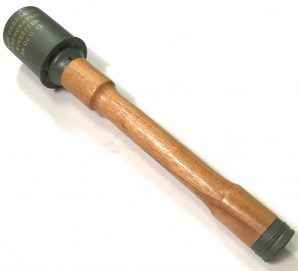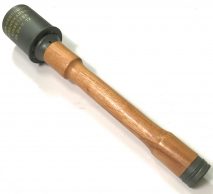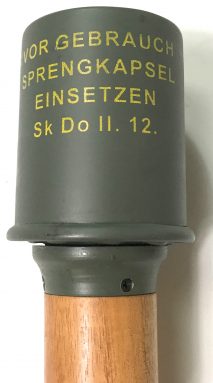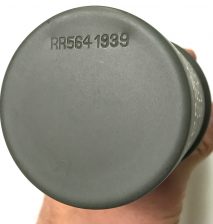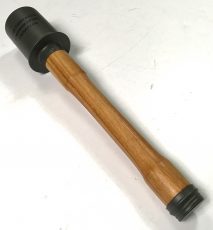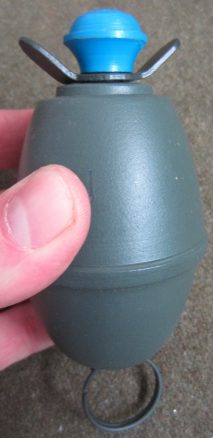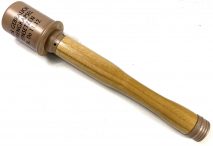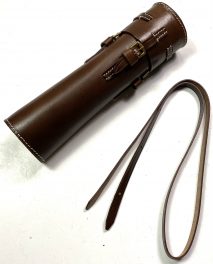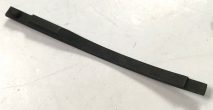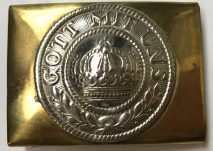FIELD GRADE REPRODUCTION.
WWII GERMAN M24 “POTATOE MASHER” STICK GRENADE. WOODEN HANDLE WITH A METAL HEAD.
A pull cord ran down the hollow handle from the detonator within the explosive head, terminating in a porcelain ball held in place by a detachable base closing cap. Pulling the cord dragged a roughened steel rod through the igniter causing it to flare up and start the five-second fuse burning.
These exposed pull cords had a tendency to accidentally snag and detonate the grenades while being carried so a threaded cap securing the cord and ball in the base of the grenade handle was added.
Stick grenades were stored in cases for transport, and their fuse assemblies inserted prior to going into combat — a reminder was stenciled on each explosive charge (“Vor Gebrauch Sprengkapsel einsetzen” “Before use insert detonator”).
With its high-explosive charge encased in a thin sheet steel can, the Model 24 was fundamentally a “concussion grenade” which relied on blast effect, rather than an anti-personnel fragmentation grenade. A serrated fragmentation sleeve (“Splitterring”) was adopted in 1942 which could be slid over the head of the grenade. Fragments of the sleeve would be scattered on detonation, making the grenade more effective against personnel.
MAN THE LINE EXCLUSIVE
GRENADE COULD NEVER BE MADE TO BE FIRED!

